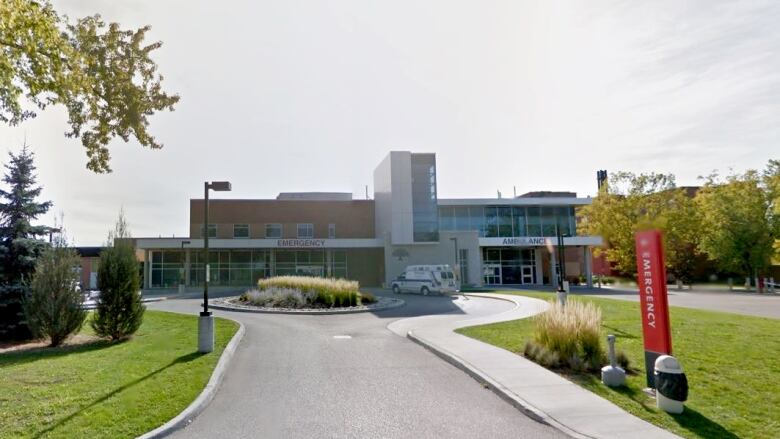Across SW Ontario, small hospitals struggle with overcapacity
Data obtained by CBC shows small hospitals from Seaforth to St. Marys regularly over capacity

Hospital capacity numbers acquired by CBC News showthat hallway medicine is a daily reality across Ontarioand not just a problem limited to big-city hospitals.
Data from a freedom of information request showthat hospital gridlock is no longer a problem limited to flu season. Instead, it'sthe new normal for many patients,including thoseat smaller, rural hospitals.
CBC London looked at capacity numbers for the "complexcontinuing care" category for hospitals in theSouth West Local Health Integration Network (LHIN), coveringan area that stretches from Lake Erie to the Bruce Peninsula and includes almost a million people.Care considered "complex" is provided for patients with long-term illnesses or disabilities.
The data released covers hospital capacity information for the first six months of 2019.
Here's the South West LHIN's numbers for complex continuing care broken down by hospital.
| Hospital | Ave. Capacity | No. of days over 100% capacity |
|---|---|---|
| Alexandra Marine & General Hospital | 82.3% | 0 |
| Clinton Public Hospital | 101.8% | 48 |
| Grey Bruce Health Services-Wiarton site | 90.9% | 0 |
| Listowel Memorial Hospital | 81.1% | 0 |
| Seaforth Community Hospital | 105.4% | 49 |
| South Huron Hospital | 100% | 0 |
| St. Mary's Memorial Hospital | 105.0% | 76 |
| St. Thomas-Elgin General Hospital | 101.1% | 92 |
| St. Josephs Mental Health-Parkwood Institute | 90.4% | 0 |
| Stratford General Hospital | 108.7% | 52 |
| TillsonburgDistrict Memorial Hospital | 71.0% | 0 |
| Wingham and District Hospital | 82.2% | 2 |
| Woodstock General Hospital | 103.1% | 82 |
The data shows that many hospitals in rural areas of southwestern Ontario are operated beyond 100 per cent capacity when averaged over the 181 days studied.
For example, Stratford General Hospital averaged 108.7 per cent capacity, while Seaforth Community Hospital averaged 105.4 per cent.Hospital capacity numbers also exceeded 100 per cent at St. MarysMemorial (105per cent) and Woodstock General (103.1 per cent).
The numbers didn't come as a surprise toAndrew Williams, president andCEO of Huron Perth Healthcare Alliance, which operates four small hospitals (St. Marys, Seaforth, Clinton and Stratford). All four operated at an average capactiy exceeding 100 per cent over the first six months of 2019.
"We see hospitals across the province operating at 100 per cent capacity, if not more at times," Williams said.
Lack of long-term care beds
He said there a number of reasons pushing hospitals to operate beyond their intended capacity, but a main factor is the need to provide care beds for patients awaiting access to home care or long-term care.
"Today is a case in point," Williams said in an interview with CBC News on Tuesday. "Across our organization, we have 20 individuals who are in hospital beds for patients who are waiting to go somewhere else.
"You have this constant challenge of making sure that you're available to admit the people that need to be admitted and that you're able to get the people who need to leave to go to another location. It's an ongoing challenge," said Williams.
Alternate level of care (ALC)is the administrative designation for patients occupying a hospital bed while waiting for care elsewhere.
Williams estimates ALC patients account for anywhere from 10 to 20 per cent of his capacity at the four hospitals he oversees.
Staff called back after working full shift
A lack of long-term care beds and home care spaces are a significant source of backups, William said.
He believes provincial officials are aware of the capacity pressuresbut said until they're addressed, patients have little choice but to face longer waits for the care they need.
It also adds to staff strain.
"If you're operating over capacity it puts huge pressure on the team," said Williams. "Last night we had a busy emergency department at our Stratford site. We had to call a staff member back after they'd gone home, after grocery shopping at the end of her shift," Williams said.
"It's not ideal for anyone to be operating for a long period of time over capacity."












_(720p).jpg)


 OFFICIAL HD MUSIC VIDEO.jpg)
.jpg)



























































































